Phylogenetic Reassessment, Taxonomy, and Biogeography of Codinaea and Similar Fungi
- PMID: 34947079
- PMCID: PMC8704094
- DOI: 10.3390/jof7121097
Phylogenetic Reassessment, Taxonomy, and Biogeography of Codinaea and Similar Fungi
Abstract
The genus Codinaea is a phialidic, dematiaceous hyphomycete known for its intriguing morphology and turbulent taxonomic history. This polyphasic study represents a new, comprehensive view on the taxonomy, systematics, and biogeography of Codinaea and its relatives. Phylogenetic analyses of three nuclear loci confirmed that Codinaea is polyphyletic. The generic concept was emended; it includes four morphotypes that contribute to its morphological complexity. Ancestral inference showed that the evolution of some traits is correlated and that these traits previously used to delimit taxa at the generic level occur in species that were shown to be congeneric. Five lineages of Codinaea-like fungi were recognized and introduced as new genera: Codinaeella, Nimesporella, Stilbochaeta, Tainosphaeriella, and Xyladelphia. Dual DNA barcoding facilitated identification at the species level. Codinaea and its segregates thrive on decaying plants, rarely occurring as endophytes or plant pathogens. Environmental ITS sequences indicate that they are common in bulk soil. The geographic distribution found using GlobalFungi database was consistent with known data. Most species are distributed in either the Holarctic realm or tropical geographic regions. The ancestral climatic zone was temperate, followed by transitions to the tropics; these fungi evolved primarily in Eurasia and Americas, with subsequent transitions to Africa and Australasia.
Keywords: 37 new taxa; GlobalFungi; ancestral inference; appendages; barcodes; molecular systematics; morphology; phialidic conidiogenesis.
Conflict of interest statement
The authors declare no conflict of interest. The funders had no role in the design of the study; in the collection, analyses, or interpretation of data; in the writing of the manuscript, or in the decision to publish the results.
Figures
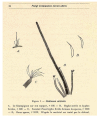



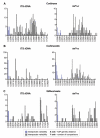



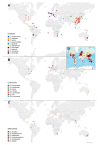

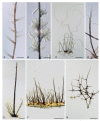


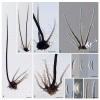


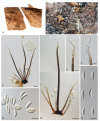






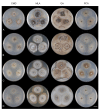

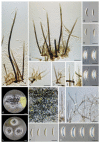
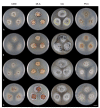


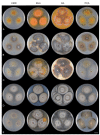



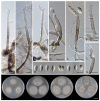











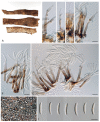




References
-
- Maire R. Fungi Catalaunici: Series altera. Contributions a l’étude de la flore mycologique de la Catalogne. Publ. Inst. Bot. Barcelona. 1937;3:1–128.
-
- Hughes S.J., Kendrick W.B. New Zealand fungi 12. Menispora, Codinaea, Menisporopsis. N. Z. J. Bot. 1968;6:323–375. doi: 10.1080/0028825X.1968.10428818. - DOI
-
- Agnihothrudu V. Notes on fungi from North-east India. XVII. Menisporella Assamica gen. et sp. nov. . Proc. Natl. Acad. Sci. India Sect. B Biol. Sci. 1962;56:97–102.
-
- MycoBank Database. [(accessed on 1 September 2021)]. Available online: www.mycobank.org.
-
- Matsushima T. Icones Microfungorum a Matsushima Lectorum. Matsushima; Kobe, Japan: 1975.
Grants and funding
LinkOut - more resources
Full Text Sources

